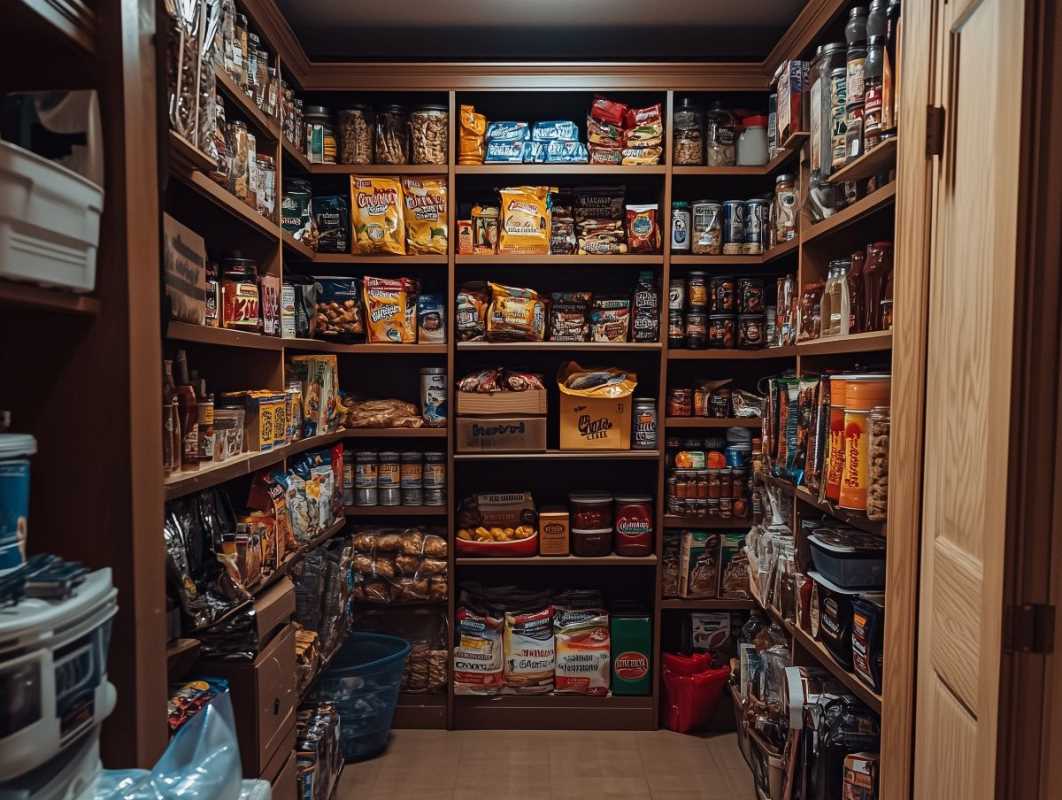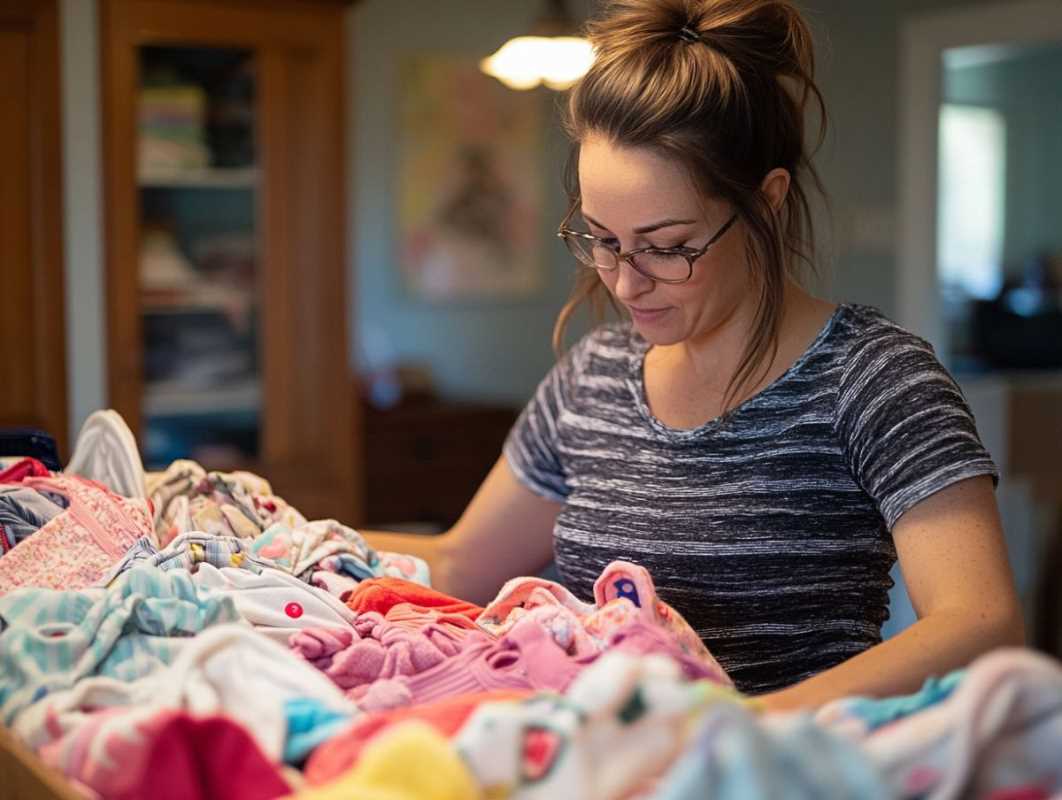When it comes to making breakfast, packing lunches, or just grabbing a quick snack for your child, having an organized kitchen pantry can be a total game-changer. It’s not just about keeping things tidy—it’s about creating a system that makes meal prep easier, reduces stress, and teaches kids a little independence along the way.
Here’s a comprehensive guide to organizing your pantry with kids in mind. We’ll cover everything from setting up snack zones to rotating stock, so you can spend less time searching for that box of crackers and more quality time with your family.
Step 1: Declutter Before You Organize
Before you can create the perfect kid-friendly pantry, you’ll need to take stock of what you already have.
- Empty Out Your Pantry: Take everything out and lay it all out on your countertops or table. This gives you a clear idea of what needs to stay and what needs to go.
- Check Expiration Dates: Toss anything that’s expired or stale.
- Sort into Categories: Group similar items together—snacks, breakfast staples, canned goods, baking supplies, etc.
Pro Tip: Create a donation box for unopened items that your family won’t use, and give it to a local food pantry.
Step 2: Create a Kid-Friendly Snack Zone
One of the best ways to make your pantry more functional for kids is by creating a dedicated snack zone. This makes it easy for little ones to grab their own pre-approved snacks without rummaging through the entire pantry.
How to Set Up a Snack Zone
- Use Low Shelves: Place the snack zone on a lower shelf that kids can reach easily.
- Choose Clear Containers: Clear bins or jars make it easy for kids to see their options. No more “Mom, where’s the granola bar?” moments!
- Pre-Portion Snacks: Divide items like pretzels, crackers, or dried fruit into reusable snack bags or small containers. This keeps portions under control and speeds up lunch packing.
- Add Labels: Label each bin with words or pictures (for younger kids) so they know exactly where to find what they want.
Some Snack Zone Ideas:
- A bin for granola bars, fruit snacks, or trail mixes.
- A bowl of fresh fruit like apples, oranges, or bananas.
- A container for crackers or rice cakes.
Not only does this empower your kids to make choices, but it also keeps the rest of your pantry from turning into a snack hoard.
Step 3: Prioritize Healthy Options
We all know how quickly kids gravitate toward cookies and chips. Make it easier for them to choose healthier options by storing them at eye level.
Easy Healthy Pantry Ideas
- Oatmeal and Cereals: Keep low-sugar options like rolled oats, unsweetened cereal, or granola within reach.
- Nuts and Seeds: Fill jars with almonds, sunflower seeds, or trail mix for a wholesome snack.
- Dried Fruit: Raisins, apples, and apricots can live in the snack zone for easy access.
- Whole-Grain Snacks: Look for crackers or popcorn that are minimally processed.
Pro Tip: Save indulgent treats for higher shelves where they’re out of sight and out of mind—at least for the kids!
Step 4: Label Like a Pro
Labels are your best friend when it comes to pantry organization. Clear labeling helps everyone in the household find what they need and put things back where they belong.
Label Ideas for a Kid-Friendly Pantry
- Chalkboard Labels: These are great because they’re reusable. Simply erase and relabel when needed.
- Color-Coded Stickers: Assign a different color to each category, like green for snacks and blue for breakfast items.
- Picture Labels: Use pictures or icons to help younger kids identify bins and containers.
Pro Tip: Use waterproof or laminated labels for longevity, especially for items that kids handle often.
Step 5: Bulk Storage Solutions
If you buy in bulk (hello, value packs of applesauce), you’ll need to find a way to manage those oversized purchases without them taking over your entire pantry.
How to Store Bulk Items
- Decant Into Smaller Containers: Pour dry goods like cereal, pasta, or rice into smaller, easy-to-handle containers or jars.
- Use Airtight Bins: These are ideal for keeping snacks fresh and preventing spills, especially if kids are helping themselves.
- Store Extras in a Utility Closet or Garage: Keep the pantry functional by storing bulky backup items elsewhere. Use shelving or stackable bins to keep them accessible but out of your daily space.
Step 6: Rotate Stock Regularly
Food rotation isn’t just for restaurants—it’s also essential for a well-organized pantry.
Simple Rotation Tips
- Follow “First In, First Out” (FIFO): Place newer items at the back and older items at the front so nothing gets forgotten and wasted.
- Seasonal Items: Rotate seasonal foods and supplies (like hot cocoa mix or popsicles) to reflect the time of year.
- Weekly Check-Ins: Before grocery shopping, take a few minutes to scan your pantry for low stock or nearing-expiry items.
Pro Tip: Teach your kids to help with rotation! They’ll love rearranging snack bins or sorting cereal boxes.
Step 7: Invest in Organization Tools
The right tools can make all the difference. Here are some must-haves for a well-organized pantry.
Pantry Must-Haves
- Clear Plastic Bins: Perfect for grouping snacks, canned goods, or lunch prep supplies.
- Lazy Susans: Store jars or condiments on a turntable for easy access.
- Tiered Shelving: Great for displaying canned goods or small jars, so nothing gets lost in the back.
- Over-the-Door Organizers: Use these for additional space to store spices, wipes, or small snacks.
- Freezer Bags with Clips: For storing half-eaten snacks or repurposing large snack bags into smaller portions.
Step 8: Make It Fun for Your Kids
Getting your kids involved in organizing the pantry is a great way to teach them some responsibility and make the whole process enjoyable.
Fun Ideas for Kids
- Snack Bin Decorating: Have your kids decorate the snack bins or draw labels for them.
- Sorting Games: Turn sorting snacks and cans into a fun game—they’ll never know they’re helping!
- Reward Cleanup and Organization: Offer a fun incentive, like letting them choose a special treat for their efforts.
An organized pantry tailored to kids’ meals and snacks can simplify your routine and save precious time during busy mornings. By creating dedicated zones, prioritizing healthy foods, and using clever storage tools, you’ll have a pantry system that works for the whole family—and one your kids can easily use too.
 (Image source: Midjourney)
(Image source: Midjourney) 





